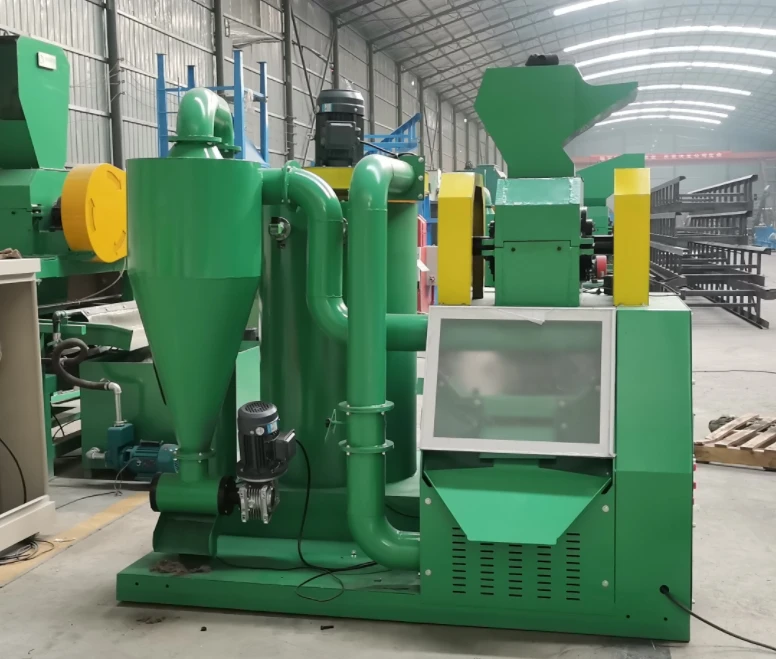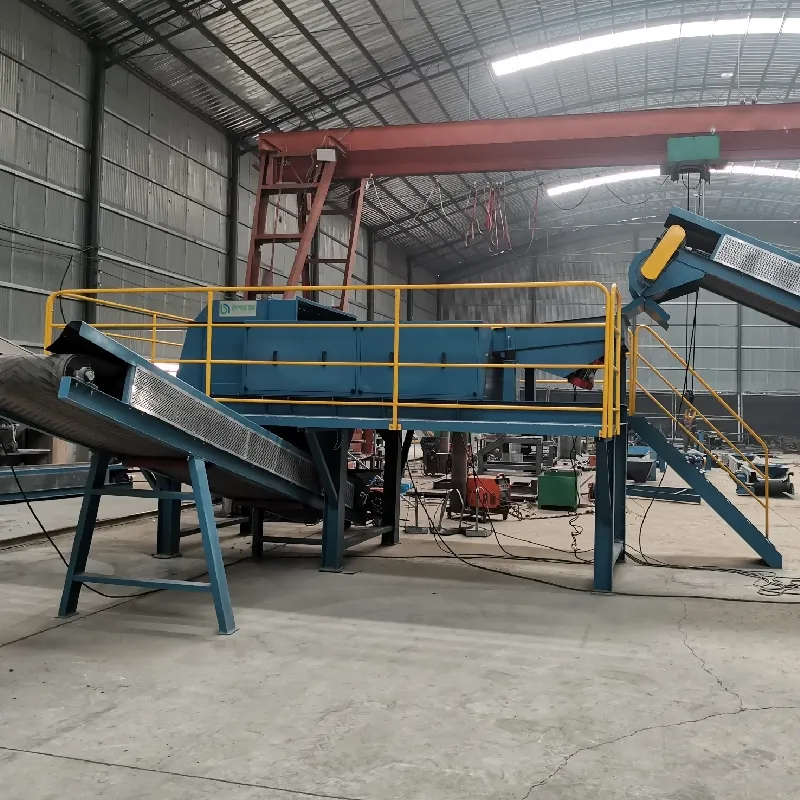

ജുലാ . 08, 2025 06:59 Back to list

(dual shaft shredder)
In an era of escalating industrial waste and resource recovery needs, the dual shaft shredder has become a pivotal machine across manufacturing, recycling, and waste management sectors. Engineered for reliability and heavy-duty operations, dual shaft shredders respond to the critical challenge of size reduction for bulky, heterogeneous, and tough materials. Industry surveys indicate that the global shredding machinery market is forecasted to reach USD 6.7 billion by 2027, with dual shaft solutions accounting for a significant portion of this growth, spurred by increased investment in sustainable manufacturing and recycling facilities. The rising demand for these shredders is especially pronounced in automotive, construction, e-waste, and plastic recycling industries, where processing versatility and throughput are essential.
As companies seek sustainable processing solutions, features such as high torque, automated monitoring, and adaptability of the dual shaft shredder machine are increasingly prioritized. Buyers exploring dual shaft shredder for sale are not only after equipment but also a provider of robust after-sales support, integration know-how, and technology upgrades. The sections below will dissect these trends in depth, beginning with a data-driven overview of the machines’ key technical merits.
The dual shaft shredder machine distinguishes itself in industrial settings due to its engineering characteristics, process flexibility, and operational efficiency. Unlike single shaft shredders, dual shaft units are built with two synchronized counter-rotating shafts, minimizing jamming and enhancing self-cleaning capabilities. Modern units feature energy-efficient electric drives, intelligent overload protection, and wear-optimized cutting profiles, thereby reducing maintenance downtime by up to 25% compared to legacy shredders.
Data from recent field studies highlights impressive performance metrics:
| Parameter | Dual Shaft Shredder | Conventional Shredder |
|---|---|---|
| Throughput Capacity (tons/hour) | 6 - 16 | 2 - 8 |
| Power Consumption (kWh/ton) | 11 – 16 | 15 – 21 |
| Particle Size Range (mm) | 30 – 120 | 50 – 200 |
| Downtime Reduction (%) | 25 | |
| System Automation | Advanced PLC & IoT-enabled | Limited/manual |
These characteristics make the dual shaft shredder especially valuable for processors who require not only volume reduction, but consistent output sizing and operational resilience in high-throughput scenarios. The ability to handle feedstock variability—from steel drums and tires to plastic drums and municipal solid waste (MSW)—sets these machines apart.
Procuring the right dual shaft shredder involves careful vetting of manufacturers, each bringing unique design philosophies and service packages to buyers. Below is a comparative matrix of five key producers:
| Manufacturer | Capacity Range (t/h) | Key Technologies | Global Support | Warranty (Years) |
|---|---|---|---|---|
| Ssi Shredding Systems | 5 – 15 | Multi-edge cutters, Adaptive torque control | Yes | 2 |
| UNTHA | 4 – 12 | Smart monitoring, Wear-resistant steel | Yes | 3 |
| WEIMA | 3 – 10 | Hydraulic drive, PLC control | Yes | 2 |
| Vecoplan | 2 – 8 | Vario speed, IoT-ready | Yes | 2 |
| Genox | 6 – 16 | Heavy-duty cutters, Touchscreen control | Selected regions | 1.5 |
Selecting a vendor depends on the required integration level, support network, and customization potential. It is crucial for buyers to weigh future-proofing options, localized service, and total lifecycle costs beyond the initial purchase price.
A one-size-fits-all shredder rarely delivers optimal cost-benefit outcomes in industrial processing. As such, manufacturers offer advanced customization to align with unique industry specifications. For example, pulp and paper recyclers may seek enhanced corrosion protection and variable speed control to process wet, fibrous material efficiently, while e-waste facilities demand reinforced cutters and dust containment for electronics dismantling.
Customization avenues often include:
These bespoke solutions minimize downtime, maximize machine lifespan, and amplify operator safety, making them indispensable for clients with specific regulatory or operational demands.
Dual shaft shredders have been deployed in some of the world’s most demanding operational environments. A recycling facility in Germany reported a 42% boost in PET bottle throughput after upgrading from a single shaft to dual shaft system. In the US, a major automaker utilizes dual shaft shredders to process up to 120,000 waste tires annually, transforming end-of-life tires into feedstock for road construction, while reducing landfill costs by 37%.
Similarly, an e-waste processor in Southeast Asia achieved a 60% reduction in manual labor by integrating a dual shaft shredder with fully automated sorting and dust filtration systems. These quantifiable successes reflect the adaptability of the machines across sectors such as:
One of the dual shaft shredder’s paramount advantages is its blend of low ongoing maintenance and superior energy efficiency. Data from industry benchmarking reveals that modern machines can lower processing costs by up to 18% annually when innovative drive systems and auto-lubrication are installed. Scheduled preventive maintenance extends cutting tool life by an average of 32%, reducing unplanned downtime and optimizing budget allocation.
Environmental compliance is a further driver; advanced dust extraction, soundproofing, and modular filtration options contribute to safer plant conditions and easier adherence to environmental regulations. Waste-to-energy facilities additionally report significant reductions in carbon footprint when using energy-optimized dual shaft shredder machines in their resource recovery process.
From both a cost-accounting and sustainability perspective, upgrading to or investing in a dual shaft shredder aligns with global circular economy trends and responsible production goals.
As material streams grow ever more complex and recovery rates become a key performance indicator for industrial processors, the dual shaft shredder will continue to drive innovation in mechanical pre-treatment. Future trends highlight the integration of AI-based monitoring, digital twins for process simulation, and totally automated plant networks. When selecting a dual shaft shredder, decision-makers are advised to thoroughly assess after-sales support, technology upgradability, and compliance documentation, in addition to traditional specifications such as throughput and power requirements.
The next decade will see the acceleration of automation, IoT connectivity, and environmental controls in shredding solutions, ensuring that the dual shaft shredder remains at the forefront of sustainable, efficient, and safe material processing globally.

(dual shaft shredder)
Latest news
Troubleshooting Common Eddy Separator Problems
NewsJul.04,2025
The Role of Metal Recycling Plants in Circular Economy
NewsJul.04,2025
The Impact of Recycling Line Pickers on Waste Management Costs
NewsJul.04,2025
Safety Features Every Metal Shredder Should Have
NewsJul.04,2025
How Industrial Shredders Improve Waste Management Systems
NewsJul.04,2025
How Cable Granulators Contribute to Sustainable Recycling
NewsJul.04,2025